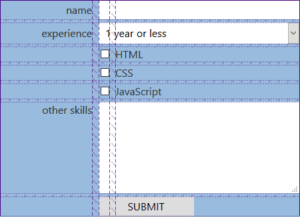This article recently appeared in the SitePoint Tribune, a weekly newsletter published by SitePoint.com To have articles like this delivered straight to your inbox, enter your email address in the subscription box below…
Paul Baugher started off his Web Design Career working as the third employee in WWWeb-Masters, Inc. in 1996. He was responsible for maintaining the company network, building all client Websites, answering the phones, coming up with marketing materials, writing help files, training new employees and so on.
All these roles gave him a tremendous amount of experience in building a business, and WWWeb-Masters eventually grew to have a list of 50 clients. When the business was sold in late 1998, Paul decided to walk away and start his own company, Digital Skyline Studios.
Starting Out
“I contacted people I’d worked with over the years, and basically networked until I found my first client.” Paul explains. “At one point I was forced to go to work for SilverCube (a now-defunct new media company) to pay my bills. Things were really rocky, although I met some great talent while I worked there.
“I saw many problems at SilverCube, and they turned out to be my most motivating factor in continuing to build on Digital Skyline Studios,” says Paul. “I realized once and for all that if you want something done right, you must do it yourself.”
At SilverCube Paul made the contacts necessary to eventually land a job for building a Ford Intranet site. Paul says, “With the money I made on the deal I invested in new equipment, joined several organizations such as the BBB and the local Chamber of Commerce — all of which have helped to solidify my company and gave me a real head start in acquiring new clients.”
Expansion – Virtually
As the business grew, Paul decided against going through the traditional route of opening an office and hiring employees. Instead, he built an online application that allows his company to use a group of about 10 freelancers (most of them local), to work on projects as necessary.
“Our business model and foundation is one that allows for freelancers to log on from any where in the world and obtain information about the projects. All of their hours, projects, and tasks are tracked online, and are available to our clients 24/7,” Paul explains. “I know most of the freelancers personally, and while some of them do Web work for a living, a few do it on the side.”
The system, which runs at the back of the Digital Skyline site, lets Paul keep track of the freelancers’ hours, along with their original quote — allowing him to hold each party accountable for their estimates.
When billing clients, Paul usually adds 20-50% onto the pre-negotiated rates he’s agreed upon with his group of freelancers. “We also make money on the recurring costs such as hosting and maintenance, all of which goes towards the overhead.”
Being in Michigan (the home of Ford and GM), Digital Skyline Studios has taken on several projects for the automotive behemoths. However, Paul’s work isn’t all big clients and long lunches. “Luckily,” he notes, “we’ve been able to stick with smaller businesses and more fun, more creative work.
“It’s been my experience that if you’re on a project, and you don’t like the work, you won’t put your heart into it. As a result, the quality will suffer. Even though there’s money in every job, if money was the only reason you were in business, you’d be better off working for some Joe Shmo.”
Digital Skyline Studio’s hasn’t restricted itself to the local market, though. “We’re working on projects for companies based in Rhode Island and Florida at the moment. As all our projects are managed online, we haven’t had any problems that couldn’t be solved with a phone call, fax or email,” explains Paul.
Working Smarter
To speed up the development of sites for small business clients, Digital Skyline has developed a core set of programming components that are re-used over and over again. “We’ve built a system that provides content management, newsletter mailings, common database functions, site statistics, Web email, automated billing, and several other features,” Paul comments.
“All of the sites we produce from start to finish are designed to work in the system, which allows our clients complete and easy control over the content of their site.”
What about marketing? Paul reveals that the best leads are local — the people you can meet for coffee, and hand your card (that, of course, includes details of your URL and email address). 80% of Digital Skyline’s clients have been referred through word of mouth, while the other 20% come from the firm’s advertising in Chamber newsletters and online.
The result of all of this? “I am happy to say that my company is completely debt-free, and has been profitable since day one,” states Paul.
Five Tips for Business-Building
- Don’t limit yourself to expansion via the traditional means. Consider building a network of freelancers who come in and work on projects as required. Manage them online.
 Matt Mickiewicz
Matt MickiewiczMatt is the co-founder of SitePoint, 99designs and Flippa. He lives in Vancouver, Canada.




